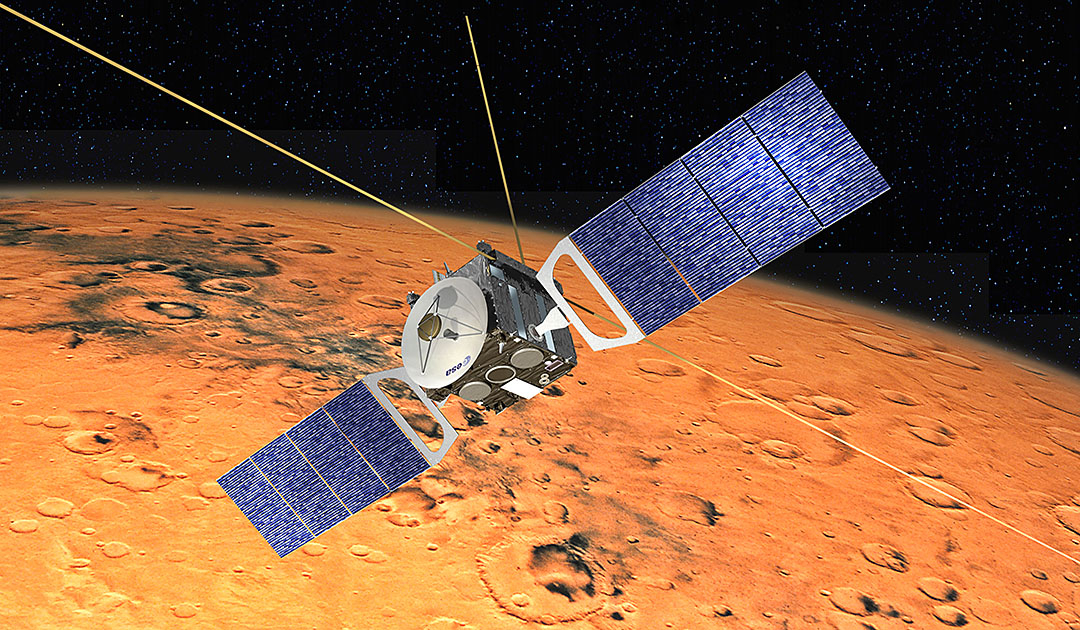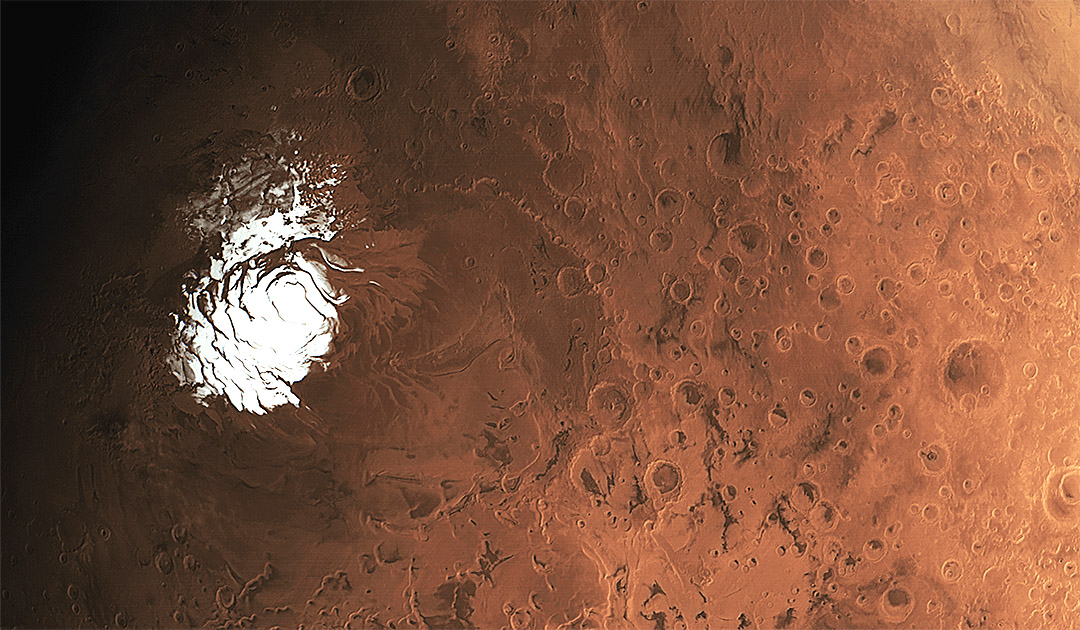
Two years ago, planetary scientists reported on the discovery of a large saltwater lake under the ice at the South Pole of Mars. A discovery that was received with excitement and some scepticism. Now the researchers say that the presence of this lake has been confirmed and three more have been found.

There are apparently several liquid reservoirs under the ice sheet at the south pole of Mars, which is approximately 1.5 kilometers thick. Researchers led by astrophysicist Elena Pettinelli now confirm this pre-existing assumption. The online journal Nature Astronomyreported it on September 28, 2020. The lakes were discovered using radar data from the European Space Agency’s Mars Express orbiter, which has been orbiting Mars since December 2003. The team tracked down subglacial lakes of different sizes with the radar sonar “Mars Advanced Radar for Subsurface and Ionosphere Sounding” (MARSIS) on board the orbiter. The presence of such lakes could have important consequences for astrobiology and potentially habitable niches on Mars.

As early as 2018, scientists using Mars Express’ longwave radar found evidence of a lake about 20 kilometers in size under the Red Planet’s permanent southern polar ice cap. But the finding was based on just 29 observations made between 2012 and 2015, and many researchers said they needed more evidence to back up the claim. The most recent study used a broader data set of 134 observations from 2012 to 2019. “We identified the same body of water, but we also found three other bodies of water around the main lake,” said planetary scientist Elena Pettinelli of the University of Rome, who is one of the study’s co-authors. “It’s a complex system.”

There are also such lakes under the ice in Antarctica. They can be tracked using data from Earth satellites. Researchers are now using a similar signal processing technique to analyze the MARSIS data set from a 250 by 300 kilometer area at the South Pole. MARSIS emits radio waves that bounce off layers of material on the surface and underground of the planet. The way the signal is reflected indicates the type of material that is in a particular place – for example, rock, ice, or water. The team discovered some areas with high reflectivity that they believe indicate liquid water trapped under more than a kilometer of Mars ice. The largest central lake has a diameter of 30 kilometers and is surrounded by three smaller lakes, each only a few kilometers wide. Pettinelli and her team suspect that the lakes have a very high salinity and therefore the water does not freeze despite the cold environment.

Astrobiologists believe it is possible that such vast salt lakes on Mars could harbor microbial life forms that have adapted to extreme conditions. Especially such microorganisms, which live in an oxygen-free environment, so-called anaerobics, would be considered. And when you consider that the solubility of oxygen in brine is up to six times the minimum level required for microbial breathing, even aerobials could survive. The authors therefore recommend that future Mars missions should search for traces of astrobiological activity in these regions.
Heiner Kubny, PolarJournal
More on the subject:





